

The State of UX in 2017 – uxdesign.cc – User Experience Design. #3 Everything is a conversation “Chatbot” is one of the hottest terms in our industry right now, and we are pretty confident you are going to be building one quite soon — if you haven’t already.

But what does the future of Conversational Interfaces look like? If you’re reading this article, there’s very little chance you haven’t heard about Conversational Interfaces in 2016. At uxdesign.cc, we’ve written about the technical and social challenges of designing conversations, helped designers who wanted to get started in that space, talked about prototyping bot experiences, and even curated some of the best chatbot experiences we’ve seen this year. Every interface is a conversation Essentially, a Conversational Interface is any user interface that mimics chatting with a real human. But stepping back for a moment: isn’t every interface a conversation between the user and the machine? Material motion - Motion - Material design guidelines. The material environment draws inspiration from real-world forces, such as gravity and friction.
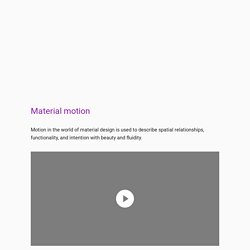
These forces are reflected in the way user input affects elements on screen and how elements react to each other. Material in motion has the following characteristics: Responsive Material is full of energy. It quickly responds to user input precisely where the user triggers it. Natural Material depicts natural movement inspired by forces in the real world. Aware Material is aware of its surroundings, including the user and other material around it. Design Principles - Overview - iOS Human Interface Guidelines. A New Skill Model for Product Managers – On Human-Centric Systems – Medium. Skill Set vs.
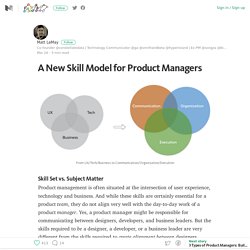
Subject Matter Product management is often situated at the intersection of user experience, technology and business. And while these skills are certainly essential for a product team, they do not align very well with the day-to-day work of a product manager. Yes, a product manager might be responsible for communicating between designers, developers, and business leaders. But the skills required to be a designer, a developer, or a business leader are very different from the skills required to create alignment between designers, developers, and business leaders. In the absence of this distinction, it is easy to confuse candidates who know how to talk about product management with candidates who will make great product managers. Different Organizations, Similar Skills The UX/Tech/Business model is further complicated by the enormous variability of the PM role.
Communication Product managers live or die by their communication skills. Organization. Duco App. Lean Development Process - New Haircut Digital Agency. Why executives should care about design sprints. If you’re like most business executives in larger companies, you probably keep an eye on the startups in your industry that continually disrupt and threaten your vantage point.
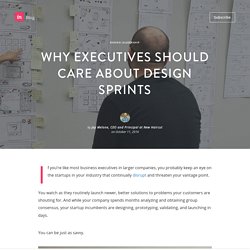
You watch as they routinely launch newer, better solutions to problems your customers are shouting for. And while your company spends months analyzing and obtaining group consensus, your startup incumbents are designing, prototyping, validating, and launching in days. You can be just as savvy. Images courtesy New Haircut. One of the most popular weapons these startups are now wielding is a process developed by Google Ventures called design sprints—a framework designed to help your company discover viable, customer-validated solutions to your biggest business challenges, while also shrinking product development timelines from many months to 5 days. “Design sprints provide the best chance for launching viable customer solutions.” The big wins for business executives is that design sprints: Solve big problems. Exemple d'organisation projet Agile.
Cet article n’a pas pour vocation de servir de référence mais plutôt d’inspiration.
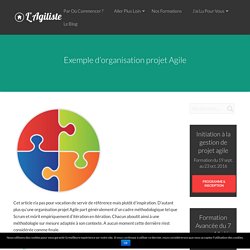
D’autant plus qu’une organisation projet Agile part généralement d’un cadre méthodologique tel que Scrum et mûrit empiriquement d’itération en itération. Chacun aboutit ainsi à une méthodologie sur mesure adaptée à son contexte.
The 8 Mobile App Metrics That Matter. Nearly 22% of apps downloaded are never used more than once.

Users are easily impressed by the promise of new apps, but their high expectations are often unmet during the app experience. The key? Tracking critical app engagement metrics and using those to inform actionable solutions. We’ve outlined the eight metrics you should be measuring, and how they reflect larger app health and marketing needs. 1. Some people gloss over this metric, but tracking your users is fundamental to creating deeper engagement, like segmenting audiences, tracking specific behavior and launching successful app marketing campaigns. The Conversion Rate that Actually Matters in Mobile Apps. Conversion optimization for mobile apps is getting more sophisticated.
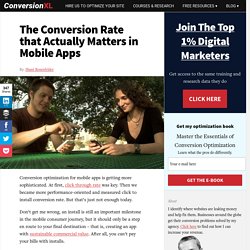
At first, click through rate was key. Then we became more performance-oriented and measured click to install conversion rate. But that’s just not enough today. Don’t get me wrong, an install is still an important milestone in the mobile consumer journey, but it should only be a step en route to your final destination – that is, creating an app with sustainable commercial value. After all, you can’t pay your bills with installs.
The Real Metric: Install-to-[Value] App engagement, or rather lack of app engagement, is becoming the key challenge for app marketers. Quora. Quora. Ramen - The SaaS Product Success Company. Road to a Great Product - Methods, Tools and Hacks. Ramen. - On creating products that people want. Maxime Braud, Product.